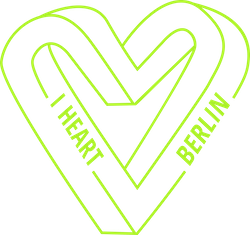Neukölln
photo: Linka A. Odom
My eight-year-old son, Yuri, tells me that he doesn’t want me to give him a haircut anymore. He’s had enough of me snipping the tips of his ears off, and he’s pissed that I never manage to get his hair to look like Cristiano Ronaldo’s. Apparently he knows of a place – his classmate Armando goes to this guy on Sonnenallee. Yuri’s passed the place a million times on the school bus coming back from swimming lessons with the school. I say, ‘Sure, why not?’, and one afternoon after school we walk along Sonnenallee looking for the magical barber who’s going to make my son look like an overpaid dimwit footballer.
Normally we don’t go down Sonnenallee. From Yuri’s school to our house it’s a straight line down a cobbled street called Weserstraße. There are bike paths on the sidewalk in both directions, and since cycling is our main method of transport, it’s the way we always go. Sonnenallee is parallel, one block up. No bike lanes and a lot of traffic. It’s a long street that has mostly (but not entirely) avoided the gentrification that has swept through this neighborhood in the last decade.
We try to find this place; he’s not really sure which block it’s on, and we look closely at all the shops we pass. ‘Is this it?’ I ask repeatedly. I’m pretty sure there are more hair places on this five-block stretch than there are Pret A Mangers in all of London.
Every once in a while we come upon a shop or place signaling the on-going spread of gentrification. At one point, we spend a long time standing in front of what appears to be a fancy restaurant opening soon. The whole place is angular and minimalistic. It looks as though it has been airlifted from Manhattan and accidentally plopped down in the wrong place. Yuri wants to know if they’ll have French fries and burgers.
We continue on and on down the street, and I am about to tell him that we must have passed the place when we land right at it. Arabic is written all over the window. Yuri pulls me inside. The shop is fluorescent-lit and only about twice the size of our bathroom. One of the hairdressers finishes up with somebody else and addresses us in German. My son tells him shyly, in German, that he wants a haircut. The hairdresser escorts him the three steps from the door to the chair on the other side of the room and asks him what style he wants. Yuri explains. The hairdresser doesn’t know who Ronaldo is, which shocks even me. He talks to the other two hairdressers in Arabic, and then one of them pulls out their smartphone and Googles a photo of the footballer.
Throughout the entire haircut, Yuri sits in the chair looking at me via the reflection in the mirror. He seems half horrified and half ecstatic, but that’s how he usually looks in new situations.
After we pay our 7 euros, mini Ronaldo and I continue home along Sonnenallee, and I can’t help but admire the fact that my son is far more integrated into life in Neukölln than I am, or probably ever will be. It occurs to me that my four-year-old, Antonín, actually is as well.
This neighborhood is the only one they’ve ever lived in. They are as happy in a hipster café as in a Döner place, as long as the food is good and – in Anto’s case – comes with ketchup. Anto will stop everyone on the street and start a conversation. He’ll wave at people across the street that I’ve never seen before and turn to me and say, ‘Those are my friends.’ For them, Neukölln isn’t split by hipsters, the working class and the immigrants that came before the immigrants who call themselves expats. It’s just the place they live. And, as far as Antonín is concerned, everybody in Neukölln is his goddamn friend.
* * *
This is an excerpts from Ambika Thompson’s essay on Neukölln. Read the full version and more stories of Letters from Berlin here.


